iPCB is a PCB design company specializing in PCB board design (layout wiring design) for electronic products. It mainly undertakes multi-layer, high-density PCB design drawing board and PCB board design proofing business.
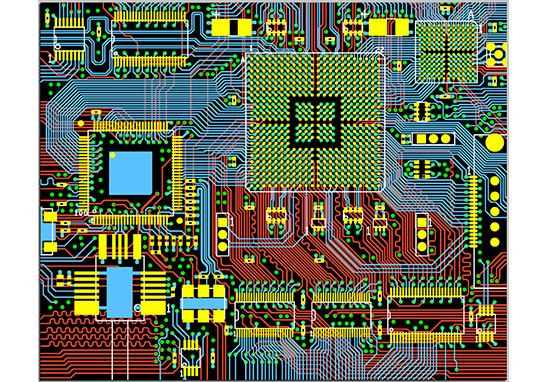
In PCB layout design, there is a complete set of methods for improving the layout rate. Here, we provide you with effective techniques to improve the layout rate and design efficiency of PCB design, which not only saves the project development cycle for customers, but also maximizes The limit guarantees the quality of the designed product.
Effective techniques to improve PCB design layout rate and design efficiency
1. The size of the PCB board and the number of wiring layers need to be determined at the beginning of the design
If the design requires the use of high-density ball grid array (BGA) components, the minimum number of wiring layers required for wiring these devices must be considered. The number of wiring layers and the stack-up method will directly affect the wiring and impedance of the printed lines. The size of the board helps determine the stacking method and the width of the printed line to achieve the desired design effect.
For many years, people have always believed that the lower the number of PCB layers, the lower the cost, but there are many other factors that affect the manufacturing cost of the PCB. In recent years, the cost difference between multilayer boards has been greatly reduced. It is best to use more circuit layers and evenly distribute the copper at the beginning of the design, so as to avoid discovering that a small number of signals do not meet the defined rules and space requirements until the end of the design, so that new layers are forced to be added. Careful planning before designing will reduce a lot of troubles in wiring.
2. The automatic wiring tool itself does not know what to do
In order to complete the wiring task, the wiring tool needs to work under the correct rules and restrictions. Different signal lines have different wiring requirements. All signal lines with special requirements must be classified. Different design classifications are different. Each signal class should have a priority, the higher the priority, the stricter the rules. The rules involve the width of the printed lines, the maximum number of vias, the degree of parallelism, the mutual influence between the signal lines, and the limit of layers. These rules have a great influence on the performance of the wiring tool. Careful consideration of design requirements is an important step for successful wiring.
To optimize the assembly process, design for manufacturability (DFM) rules impose restrictions on component layout. If the assembly department allows the components to move, the circuit can be appropriately optimized, which is more convenient for automatic wiring. The defined rules and constraints will affect the layout design.
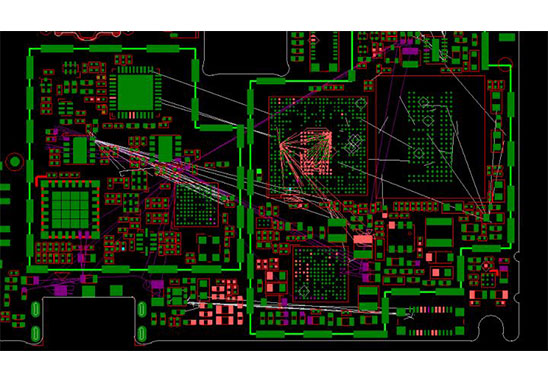
3. The routing channel and via area need to be considered during layout
These paths and areas are obvious to PCB designers, but the automatic routing tool only considers one signal at a time. By setting routing constraints and setting the layer of signal lines, the routing tool can be as the designer imagined Complete the wiring as shown.
In the fan-out design stage, in order to enable the automatic routing tool to connect the component pins, each pin of the surface mount device should have at least one via, so that when more connections are needed, the PCB can be internally layered Connection, online testing (ICT) and circuit reprocessing.
In order to maximize the efficiency of the automatic routing tool, the largest via size and printed line must be used as much as possible, and the interval is ideally set to 50mil. Use the via type that maximizes the number of routing paths. When carrying out fan-out design, it is necessary to consider the problem of circuit online testing. Test fixtures can be expensive, and they are usually ordered when they are about to go into full production. If only then consider adding nodes to achieve 100% testability, it would be too late.
After careful consideration and prediction, the design of circuit online testing can be carried out at the initial stage of the design and realized in the later production process. The type of via fan-out is determined according to the wiring path and circuit online testing. The power supply and grounding will also affect the wiring and fan-out design. . In order to reduce the inductive reactance generated by the connection line of the filter capacitor, the vias should be as close as possible to the pins of the surface mount device. Manual wiring can be used if necessary. This may affect the originally envisaged wiring path, and may even cause you to re- Consider which type of via to use, so the relationship between via and pin inductance must be considered and the priority of via specifications must be set.
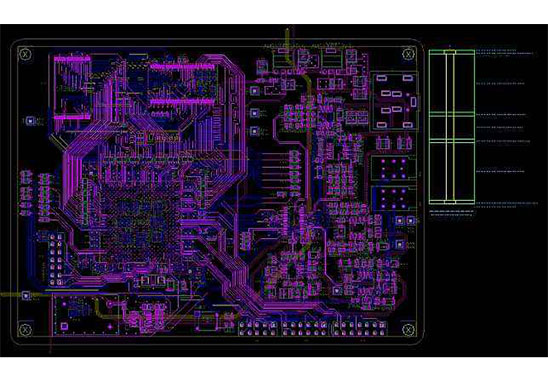
Fourth, the use of manual wiring helps automatic wiring tools to complete the wiring work
Although this article mainly discusses automatic routing, manual routing is an important process of PCB design now and in the future. The use of manual wiring helps automatic wiring tools to complete the wiring work. Regardless of the number of key signals, these signals should be routed first, either manually or in combination with automatic routing tools. Critical signals usually have to pass careful circuit design to achieve the desired performance. After the wiring is completed, the relevant engineering personnel will check the signal wiring. This process is relatively easy. After passing the inspection, fix these lines, and then start to automatically route the remaining signals.
The wiring of key signals needs to consider controlling some electrical parameters during wiring, such as reducing distributed inductance and EMC, etc. The wiring of other signals is similar. All EDA vendors provide a way to control these parameters. After understanding the input parameters of the automatic wiring tool and the influence of the input parameters on the wiring, the quality of the automatic wiring can be guaranteed to a certain extent.
Five, general rules should be used to automatically route signals
By setting restrictions and prohibiting wiring areas to limit the layers used by a given signal and the number of vias used, the wiring tool can automatically route the wires according to the engineer's design ideas. If the number of layers used by the automatic routing tool and the number of vias are not limited, each layer will be used during automatic routing, and many vias will be generated.
After setting the constraints and applying the rules created, the automatic routing will achieve results similar to expectations. Of course, some sorting work may be required, and space for other signal and network wiring needs to be ensured. After a part of the design is completed, fix it to prevent it from being affected by the subsequent wiring process.
6. Use the same steps to route the remaining signals
The number of wiring depends on the complexity of the circuit and the number of general rules you define. After each type of signal is completed, the constraints of the remaining network wiring will be reduced. But with it comes a lot of signal wiring that requires manual intervention. Today's automatic wiring tools are very powerful and can usually complete 100% of the wiring. However, when the automatic wiring tool has not completed all signal wiring, the remaining signals need to be manually wired.
If the EDA tool software you are using can list the wiring length of the signal, check these data, you may find that some signal wiring lengths with few constraints are very long. This problem is relatively easy to deal with, and the signal wiring length can be shortened and the number of vias can be reduced by manual editing. In the finishing process, you need to determine which wiring is reasonable and which wiring is unreasonable. Like manual wiring design, automatic wiring design can also be sorted and edited during the inspection process.
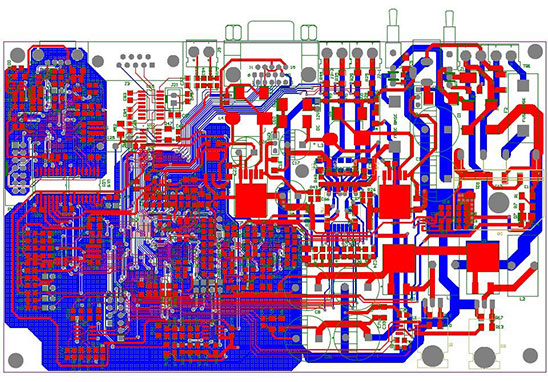
iPCB PCB design capabilities
The highest signal design rate: 10Gbps CML differential signal;
The highest number of PCB design layers: 40 layers;
Minimum line width: 2.4mil;
Minimum line spacing: 2.4mil;
Minimum BGA PIN spacing: 0.4mm;
Minimum mechanical hole diameter: 6mil;
Minimum laser drilling diameter: 4mil;
Maximum PIN number:; 63000+
Maximum number of components: 3600;
Maximum number of BGA: 48+.
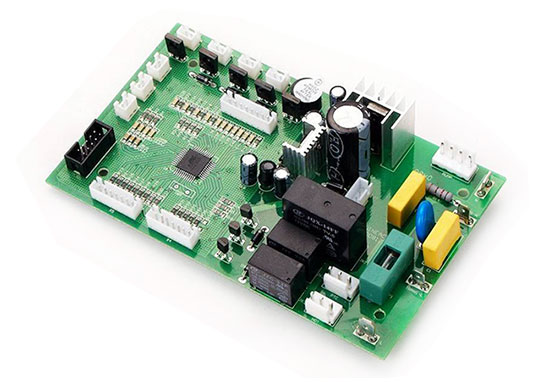
PCB design service process
1. Customers provide schematic diagrams to consult PCB design;
2. Evaluate the quotation according to the schematic diagram and customer design requirements;
3. The customer confirms the quotation, signs the contract, and prepays the project deposit;
4. Receive advance payment, arrange engineer design;
5. After the design is completed, provide a screenshot of the file to the customer for confirmation;
6. The customer confirms OK, settles the balance, and provides PCB design information.